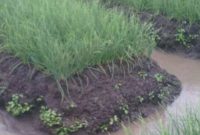Irrigation essentially means the watering of land to make it ready for agricultural purposes. An irrigation system is the supplying of water via artificial canals and channels to growing plants and crops in a field.
Water is vital for the growth of plants. There can be no plants or crops if they do not have access to water in some form. It is, therefore, crucial to supply water to crops and plants, periodically and as per their requirement. So irrigation is this periodic and appropriate supply of water to plants. The water for this irrigation comes from various sources such as wells, ponds, rivers, dams, reservoirs, rainfall etc.

Importance of Irrigation
Irrigation is necessary for agriculture and farming due to the following reasons:
- Plants absorb minerals and nutrients from the soil via their roots. These minerals are dissolved in the water present in the soil. Then the water transports these nutrients to all parts of the plant, enabling growth and photosynthesis.
- Irrigation provides the moisture that is crucial during the germination phase of the plant’s life cycle.
- Irrigation also makes the soil more fertile (by adding moisture to it) and easier to plough.
- Proper irrigation also increases yield from the farm.
Manual/Traditional Methods of Irrigation
These are the methods of irrigation that were used in the earlier years. Even today some small farms in rural areas adopt these. Although they are cheaper than the modern methods, they are not nearly as efficient. They require human or animal labour to function. Some of these methods are,
1. Moat
Also called the pulley system, it involves pulling up water from a well or other such source to irrigate the land. It is an extremely time consuming and labour intensive system, but it is very cost efficient. Also, wastage of water is avoided when using a moat system of irrigation.
2. Chain pump
A chain pump consists of two large wheels connected by a chain. There are buckets attached to the chain. One part of the chain dips into the water source. As the wheel turns, the bucket picks up water. The chain later lifts them to the upper wheel where the water gets deposited into a source. And the empty bucket gets carried back down.
3. Dhekli
It is a system of drawing water from a well or such similar source. Here we tie a rope and bucket to a pole. At the other end, we tie a heavy stick or any other object as a counterbalance. And we use this pole to draw up water.
4. Rahat
So Rahat system of irrigation uses animal labour. Above the well, we tie a large wheel. An ox or cow would turn the wheel to draw the water from the well.
